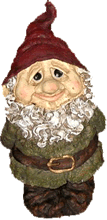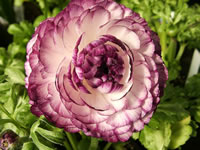Gardening Tasks and Projects for April
At long last, spring has arrived! (or has it?) As you look out upon your garden, does the nagging question of "where do I even begin" sound familiar?
 There is so much to do in every corner of the yard this month that it is difficult to know where to start.
In my opinion, the first and foremost thing to do is to stand back for a moment,
and simply enjoy the beauty that Mother Nature has given us....
Listen to the birds as they sing you a spring melody...
dream a little...
and then put on the gardening gloves and head out to make your dream garden a reality!
There is so much to do in every corner of the yard this month that it is difficult to know where to start.
In my opinion, the first and foremost thing to do is to stand back for a moment,
and simply enjoy the beauty that Mother Nature has given us....
Listen to the birds as they sing you a spring melody...
dream a little...
and then put on the gardening gloves and head out to make your dream garden a reality!
As you begin your quest for the perfect garden, don't overdo it! It's probably been a few months since you gave those muscles and bones a good workout, so start out slowly and avoid that Monday morning backache.
Shrub and Tree Care
There still is time to plant trees and shrubs. However, by the middle of this month it will be a little late to transplant large trees or shrubs, so do them now. The months of March, April and May are ideal for pruning evergreens.
If you have a Juniper, Cypress or other conifers that need shearing or pruning, this is a good time to accomplish this task. Remove all dead, diseased, and undesirable wood. Prune your Forsythia after it finishes flowering. Broadleaf and coniferous evergreens benefit most from lightly spreading a high nitrogen fertilizer around their bases.
Caring for Your Annuals, Perennials and Bulbs
April is the month for planting summer flowering bulbs like Dahlias, Gladiolas and Lilies. Mix bulb fertilizer, processed manure and peat moss into the planting soil. Tuberous Begonias and Canna should not be set outdoors until all danger of frost has passed, so wait until next month.
Plant annual seeds of Asters, Cosmos, Marigolds and Zinnias in the garden.
When all frost danger has passed you can move your stored Fuchsias and Geraniums outdoors. Trim them back, feed and re-pot if necessary. Water them well.
When they have finished blooming, you should deadhead your spring flowering bulbs. Do not cut off the green foliage yet! These green leaves continue to grow for a few weeks, and provide the bulb with food for flowering next year.
Divide perennials like Daylilies, Delphiniums, Iris, Chrysanthemums, Daisies,and Phlox. The additional plants you create can be traded or given to friends, or moved to a new area of the garden.
Hybrid Tea Roses should be fertilized prior to buds beginning to bloom. Using a systemic fertilizer will help prevent insect infestation later in the summer, as it feeds your rose. Plant new rosebushes before growth starts and buds swell.
If you have a pond or pool you should set aquatic plants any time after the middle of the month.
Fruit and Vegetable Gardens
There is always plenty to do in the vegetable garden! Control weeds and aerate the soil by cultivating between the rows of plants. April is a great time to select and plant fruit trees and berry plants. Fruits and berries do best when planted in full sun.
Plant perennial vegetables like Asparagus, Rhubarb, Horseradish etc. It's also time to plant Peas, Carrots, Beets, Spinach, Cauliflower, Cabbage, etc. Root crops like Potatoes, radishes, parsnips and onions can be planted at anytime. Late this month you can plant beans and corn. Warmer weather crops like Tomatoes, Squash, cucumbers and peppers should not be planted until next month. As your direct-seeded crops sprout, be sure to keep them thinned out to avoid crowding.
Cut out all the dead canes from your Raspberry patch. The new canes that will bear this year's fruit should have new, swollen buds along the edges. Thin these to five canes per foot of row to allow good air circulation and prevent overcrowding.
When danger of frost has passed, uncover strawberry beds and keep them well watered.
April Lawn Care
The application of a spring type of lawn fertilizer should perk up the lawn and improve its over-all color and appearance. If there is moss growing in the lawn, use spring lawn fertilizer that has the moss-killer included, so you can do both jobs in one easy application.
Spring is also a good time to thatch and over-seed the lawn. Thatch buildup can smother your lawn and provide an environment for diseases. Remove thatch with a brisk raking, or with a de thatching machine. Over seeding will help fill-in the lawn and deter the re-growth of moss and weeds. Use about one pound of quality grass seed for every 300 square feet of lawn area. Apply a light compost or soil over the seed to keep it moist and in place. Aerating the lawn will allow water to penetrate deeper into the lawn soil and reduce the need to water during the dryer months ahead. Use a garden fork and punch holes over the surface of your lawn.
As mowing becomes necessary, be certain that the blade is sharp to prevent tearing the grass tips. (Did you get the mower tuned up and sharpened back in January when I suggested it????) Set the blade on your lawnmower to cut the grass at 2 1/2 inches to avoid scalping. (A mulching blade will eliminate the need to rake or bag the clippings, prevent thatch buildup, and the clippings will provide food for the lawn.)
Caring for Your House Plants
Rotate your house plants so that each side receives it's share of light, for even growth and a balanced shape.
As the sun's rays strengthen, some plants, such as African Violets, may need to be moved away from a south-facing window to avoid leaf scorch.
Spring cleaning of your indoor plants will keep them beautiful and help to avoid diseases. Remove any spent flowers, dead leaves or branches, or any yellowing leaves. Rinse the dust from the leaves with the kitchen sprayer. Clean leaves allow the plant to breathe! Pinching back the tips of foliage plants will stimulate new growth and make your plant fuller and bushier.
If you keep a Coleus as a house plant you can still start cuttings for transplant to the garden. Use a sharp clean knife to cut the stem just below a leaf node. Remove the lowest leaves, dip the cut end into a rooting hormone and insert it into some fresh, sterile potting soil. These cuttings will be ready to use as a bright garden accent by early June.
Odds and Ends Around the Garden
It seems that different states can't agree to a universal Arbor Day, but more than likely an Arbor Day exists in your individual state or country, at some point in this month.... Plant a tree!
Although we think of this as a rainy month, it can fool us. Keep transplanted flowers well watered during dry spells. Be sure to take a little time to check the plants in containers and those under the eaves of the house and under tall evergreens to see that they are getting enough water.
If you receive some mail-order plants or can't resist the urge to pick up a few perennials before you are ready, make a trench and heel them into the ground in a protected area.
Driving around the neighborhood, ar visiting a local nursery may give you some great ideas of what you'd like to have blooming in your yard at this time next year. Take a stroll in the woods or the park at least once each season to enjoy a little bit of Mother Natures gardening handiwork!
Remember that whatever you accomplish in the garden now will definitely cut down on yard maintenance later this season!

How to grow and care for Persian Buttercups